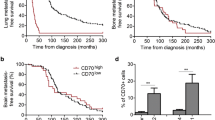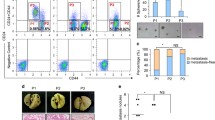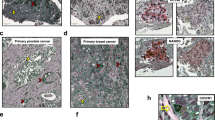Abstract
Background
Metastasis is a devastating complication of breast cancer. Cancer relapse and metastasis are associated with cancer stem cells. CicBIRC6 is a circular RNA that is proposed to be involved in the stemness of stem cells. In breast cancer, metastatic tumor cells have higher stem cell properties. In the present study, we evaluate the expression of cicBIRC6 in these cells.
Methods
After the development of a syngeneic animal model of TNBC, primary breast cancer cells named 4T1T were isolated from the tumor mass. Highly metastatic tumor cells named 4T1B and 4T1L were isolated and expanded from brain metastasis lesions and lungs of cancerous mice respectively. Sphere formation ability in metastatic and primary tumor cells was evaluated separately. The quantitative real-time polymerase chain reaction was performed to analyze the expression of cicBIRC6 in primary and metastatic tumor cells.
Results
Our data revealed that, sphere formation ability among metastatic tumor cells was significantly higher. Surprisingly expression of cicBIRC6 was significantly upregulated in these metastatic tumor cells. In comparison with 4T1T, cicBIRC6 was upregulated 5.7 and 3.5 times in 4T1B and 4T1L respectively.
Conclusion
These findings provided important insights regarding the molecular properties of metastatic tumor cells and can be used for designing a targeted therapeutic strategy in combat with these cells.



Similar content being viewed by others
Data Availability
All data generated or analyzed during this study are included in this published article.
References
Siegel RL, Miller KD, Jemal A, Cancer statistics (2016) CA: a cancer journal for clinicians. 2016;66(1):7–30
Yao H, He G, Yan S, Chen C, Song L, Rosol TJ et al (2017) Triple-negative breast cancer: is there a treatment on the horizon? Oncotarget 8(1):1913
Acharyya S, Oskarsson T, Vanharanta S, Malladi S, Kim J, Morris PG et al (2012) A CXCL1 paracrine network links cancer chemoresistance and metastasis. Cell 150(1):165–178
Piccart MJ, Wood WC, Hung C-M, Solin LJ, Cardoso F (2007) Breast Cancer Management and Molecular Medicine. Springer Science & Business Media
Lin Y, Zhong Y, Guan H, Zhang X, Sun Q (2012) CD44+/CD24-phenotype contributes to malignant relapse following surgical resection and chemotherapy in patients with invasive ductal carcinoma. J experimental Clin cancer Res 31(1):59
Fillmore CM, Kuperwasser C (2008) Human breast cancer cell lines contain stem-like cells that self-renew, give rise to phenotypically diverse progeny and survive chemotherapy. Breast Cancer Res 10(2):R25
Morrison BJ, Steel JC, Morris JC (2012) Sphere culture of murine lung cancer cell lines are enriched with cancer initiating cells. PLoS ONE 7(11):e49752
Amaral RL, Miranda M, Marcato PD, Swiech K (2017) Comparative analysis of 3D bladder tumor spheroids obtained by forced floating and hanging drop methods for drug screening. Front Physiol 8:605
Guo JU, Agarwal V, Guo H, Bartel DP (2014) Expanded identification and characterization of mammalian circular RNAs. Genome Biol 15(7):1–14
Salzman J, Gawad C, Wang PL, Lacayo N, Brown PO (2012) Circular RNAs are the predominant transcript isoform from hundreds of human genes in diverse cell types. PLoS ONE 7(2):e30733
Jeck WR, Sorrentino JA, Wang K, Slevin MK, Burd CE, Liu J et al (2013) Circular RNAs are abundant, conserved, and associated with ALU repeats. RNA 19(2):141–157
He J, Xie Q, Xu H, Li J, Li Y (2017) Circular RNAs and cancer. Cancer Lett 396:138–144
Yu C-Y, Li T-C, Wu Y-Y, Yeh C-H, Chiang W, Chuang C-Y et al (2017) The circular RNA circBIRC6 participates in the molecular circuitry controlling human pluripotency. Nat Commun 8(1):1–15
Walsh C, Tanjoni I, Uryu S, Tomar A, Nam J-O, Luo H et al (2010) Oral delivery of PND-1186 FAK inhibitor decreases tumor growth and spontaneous breast to lung metastasis in pre-clinical models. Cancer Biol Ther 9(10):778–790
FARAHANI MK (2020) Down-Regulation of Death Receptor-5 in Metastatic Cascade of Triple-Negative Breast Cancer.TURKISH JOURNAL OF ONCOLOGY. ; 35(3)
Farahani̇ MK (2020) High Capacity of the Metastatic Breast Tumor Cells in Sphere Formation: Clue for Chemoresistance in Triple-Negative Breast Cancer. Turkish J Oncol 35(4):466–470
Kuşoğlu A, Avcı ÇB(2018) Cancer stem cells: A brief review of current status.Gene.
Britton KM, Kirby JA, Lennard TW, Meeson AP (2011) Cancer stem cells and side population cells in breast cancer and metastasis. Cancers 3(2):2106–2130
Yang H, Zhao M, Zhao L, Li P, Duan Y, Li G (2020) CircRNA BIRC6 promotes non-small cell lung cancer cell progression by sponging microRNA-145. Cell Oncol 43(3):477–488
Jin Z, Gao B, Gong Y, Guan L(2020) Depletion of circ-BIRC6, a circular RNA, suppresses non-small cell lung cancer progression by targeting miR-4491.BioScience Trends.
Zhou L, Wang B, Zhang Y, Yao K, Liu B (2021) Silencing circ–BIRC6 inhibits the proliferation, invasion, migration and epithelial–mesenchymal transition of bladder cancer cells by targeting the miR–495–3p/XBP1 signaling axis. Mol Med Rep 24(5):1–11
Yang G, Wang X, Liu B, Lu Z, Xu Z, Xiu P et al (2019) circ-BIRC6, a circular RNA, promotes hepatocellular carcinoma progression by targeting the miR-3918/Bcl2 axis. Cell Cycle 18(9):976–989
Huang J, Li J Tumor molecular marker circBIRC6 and Inhibitor and use thereof [Internet]. China
Lv Y, Ma X, Du Y, Feng J (2021) Understanding patterns of brain metastasis in triple-negative breast cancer and exploring potential therapeutic targets. OncoTargets and therapy 14:589
Lee K-L, Chen G, Chen T-Y, Kuo Y-C, Su Y-K (2020) Effects of cancer stem cells in triple-negative breast cancer and brain metastasis: challenges and solutions. Cancers 12(8):2122
Acknowledgements
We would like to thank the research assistant of Shahroud University of medical sciences and all the participants who helped us in this project.
Funding
This study was supported by grant No 140082 from Shahroud University of Medical Sciences (SHMU).
Author information
Authors and Affiliations
Corresponding author
Ethics declarations
Competing interests
The author declares that they have no competing interests.
Ethical statement
The Ethics Committee of Shahroud University of Medical Sciences approved this study for ethics in animal research (registration number: IR.SHMU.REC.1400.265).
Additional information
Publisher’s Note
Springer Nature remains neutral with regard to jurisdictional claims in published maps and institutional affiliations.
Electronic supplementary material
Below is the link to the electronic supplementary material.
Rights and permissions
Springer Nature or its licensor (e.g. a society or other partner) holds exclusive rights to this article under a publishing agreement with the author(s) or other rightsholder(s); author self-archiving of the accepted manuscript version of this article is solely governed by the terms of such publishing agreement and applicable law.
About this article
Cite this article
Kamalabadi-Farahani, M., Karimi, R. & Atashi, A. High percentage of Cancer Stem cells in metastatic locations: Upregulation of cicBIRC6 in highly metastatic breast Cancer Subline. Mol Biol Rep 50, 1303–1309 (2023). https://doi.org/10.1007/s11033-022-08024-6
Received:
Accepted:
Published:
Issue Date:
DOI: https://doi.org/10.1007/s11033-022-08024-6




